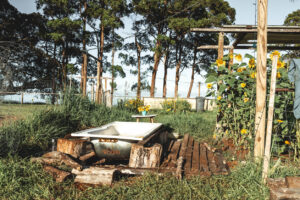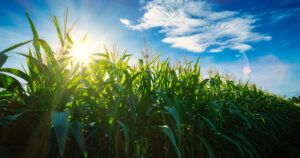Since founding Farmers Edge in 2005, Wade Barnes has had a front-row seat to the evolution of agtech. Now operating in six countries with $103 million in venture funding, Forbes recently named the Canadian outfit as one of the 25 “Most Innovative AgTech Companies.” When it comes to what 2020 has in store for his industry, Barnes sees consolidation in his crystal ball.
“We’re going to see more consolidation of smaller agtech companies being gobbled up by larger platforms,” Barnes wrote to AFN via email. “You will see the main platforms consuming more of the market share, and it will become even more difficult for smaller startups to get into the market.”
2019 certainly saw a number of big mergers. ISCA Global emerged from the tie-up between ISCA Technologies (US), ISCA Tecnologias (Brazil), and ATGC Biotech (India) to combine 25 years of insect-related R&D. Plant Response Biotech merged with Koch Biological Solutions, too, as the first step in more planned rollups. But Bayer CropScience executive Brett Begemann told AFN reporter Richard Martyn-Hemphill that mergers remain the exception instead of the rule in agtech, despite the company’s recent acquisition of Monsanto for $63 billion in 2018.
But Barnes and fellow agtech veteran Pat Christie see consolidation increasing in 2020.
When it comes to the challenges Barnes identifies in the industry, a story we’ve heard from a few different sources surfaces:
“Farmers are inundated with various technologies from different service providers. One of the biggest frustrations they have is not being able to use technology in an effective way to see an improvement on their return on investment,” Barnes wrote to AFN via email. “Farmers want a clear, concise path to effectively utilizing technology to see immediate payback; once they see the ROI, they don’t look back.
He’s also reserving some skepticism over a few segments that have received substantial attention recently, such as microbial technologies. A number of products are entering the marketplace that claim to eliminate the use of fertilizer almost completely, he writes. But he has some concern about whether the technologies are effective in the long-term.
Challenges and skepticism aside, Farmers Edge is pushing ahead in 2020, focusing on expanding its digital agriculture ecosystem by integrating its datasets with its digital platform, FarmCommand.
“We’re empowering farmers to better interact with data and simplifying how they make insurance, farm finance, and agronomic decisions on a day-to-day basis. We want to advance our technologies to a place where it’s not a unique offering any more, but daily sought-after tools to make banking and agronomic decisions, and a “normal” part of everyday farm management,” he writes. “By putting a stronger focus on the use of artificial intelligence, machine learning and other forms of advanced data science, we are leveraging data to be predictive rather than reactive.”
Here are Barnes six agriculture predictions for 2020
Be sure to checkout AFN’s roundup of 2020 predictions from several of agri-foodtech’s leading VCs too.
Growers Will Need to Supply Data Directly as “Traceability” Becomes More Important.
In 2020 and beyond, growers will play a bigger role in the agricultural value chain amid increasing consumer and industry demand for accurate and timely crop traceability. Food companies are increasingly paying more attention to the “transparency generation,” a category of consumers that make food purchase decisions based on its origin and how it is cultivated and packaged. Food companies also need to comply with increasing FDA regulations related to where their food comes from. Farmers will increasingly deal directly with food companies and suppliers and provide data directly from the farm, related to factors like fuel consumption or safety standards. Read about two microbe-based traceability technologies that raised fundings in 2019 here and here.
Crop Insurance and Financing Gets Personal in 2020.
With the proliferation of digital farming tools leveraging field-level data and predictive models, growers now have the option to share their data with insurance and credit union finance partners — but only if they opt-in, and this will not be mandatory. There will be new tailored offerings leveraging this rich new source of data while offering better risk management and data transparency for more efficient, streamlined operations. The rise of digital farming will also enable emerging markets such as Brazil — which have little or no crop insurance today — to embrace new, data-driven insurance products. Read about a fintech-meets-agtech financing from 2019 here.
Robots! Robots! Robots!
In 2020, your next field scout could be more like R2D2 from Star Wars than the ag university student you normally hire each season to scout your fields. Labor shortages will most likely continue to grow in 2020, which will drive farmers to adopt more drones and we’ll also see a dramatic increase in machine learning and AI being adopted to mine data for trends. There is already automation in specialty crops like horticultural crops but we’ll see this move to broadacre crops. We’ll begin to see big farms in Montana, Saskatchewan and Brazil embrace automation as well, on a larger scale. Read about the “go big or go home” renaissance” that may transform robotics here and a few robotics fundings from 2019 here.
The Hemp “Green Rush Fever” Continues to Spread. 2020 will continue to see a dramatic increase in farmers shifting to hemp and CBD.
We’ll also see more hemp farmers turn to digital tools to determine if CBD levels are meeting state regulations. Because so little is known about hemp, being able to get more data — including digital imagery — will move the industry forward. The US market will increase and grow, some analysts are predicting over 100% by 2023. Read about some of the digital tools that appeared in the hemp industry here and here.
Farmers Will Increasingly Seek New Data Sources for Yield Predictions.
In 2020 there will be a growing desire to use data to get a higher level of accuracy, field by field. Growers need to understand their yield predictions before harvest so they can take advantage of markets and also get better insight into where the market is going, and weather is increasingly unpredictable. There is increasing impatience from farmers about the USDA WASDE numbers, and alternative data from non-government sources will become more widely available and used.
Drastic Weather Will Continue to Change the Rules in 2020.
In 2020, more farmers will accept that they must prepare for more adverse weather events. Farmers will increasingly see data, and the investment in digital farming tools, as the best way to manage their operations and fight the effects of drastic weather. For instance, on the heels of the exceptionally wet spring and summer of 2019, U.S. growers understand the limitations that local weather station data provided. Only on-farm weather capabilities, which can detect micro-changes in field conditions on a zone by zone basis, will provide the insight farmers need to manage more complex and nuanced weather-related decisions like planting and harvesting. Read AFN’s recent investigation into 2019’s extreme weather and how it impacted farmers here.
What are your predictions for 2020 and beyond? We want to hear from you! Email [email protected]
















Sponsored
International Fresh Produce Association launches year 3 of its produce accelerator